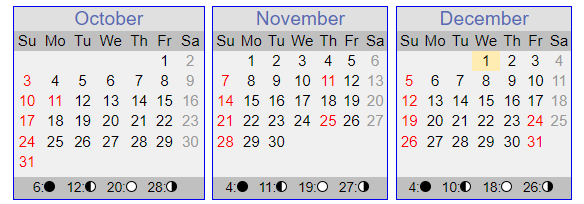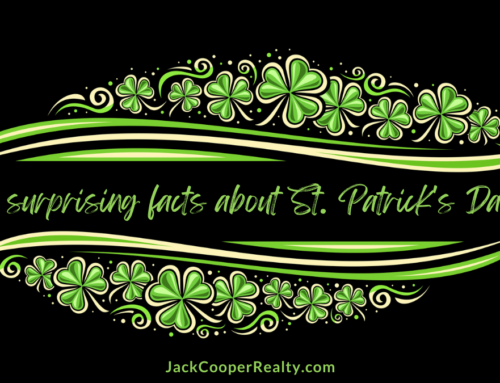
If you’re like many people, you already know that the winter solstice is the day that boasts the shortest period of daylight and the longest night. December 21 is the big day (or more appropriately, small day) in the Northern Hemisphere. But what you may not know is that the solstice has a very interesting history – and plenty of noteworthy things have happened throughout the centuries on the winter solstice.
9 Wild (and Wonderful) Facts About the Winter Solstice
Whether you’re celebrating winter solstice in your new home in Baltimore County, you’re selling your house this winter, or you’re just ready for winter to wrap up, these facts are great for sharing with friends around the fire.

Winter solstice’s cousin, the summer solstice, gives us the most daylight we’ll get in a single day all year.
Winter Solstice Fact #1: The Winter Solstice Has a Friendly (and Much Warmer) Cousin
Winter solstice may be the shortest day of the year (you can expect the sun to set over Baltimore at 4:47 p.m. this year), but we couldn’t have it if there wasn’t another day that holds the title for the longest day of the year. The summer solstice, which occurs on June 21, is the day when the sun tracks its longest path through the sky that we’ll see all year – and that night is the shortest. Sure, there are still 24 hours, but the sun won’t disappear over the horizon until 8:37 p.m. on summer solstice 2022.

Stonehenge is lined up to capture the sunset on the day of the winter solstice.
Winter Solstice Fact #2: Stonehenge Gives You a Great View of the Sunset on Winter Solstice
The mysterious Stonehenge is lined up just right for viewing the sunset on winter solstice. In fact, the monument’s primary axis is oriented to the sunset on that day. There’s also a structure located in Boyne Valley, Ireland, called Newgrange that you may not have learned about in school. That one’s aligned with the winter solstice’s sunrise.

Though we eat turkey to celebrate and remember the first Thanksgiving, we rarely celebrate the day the Pilgrims landed at Plymouth Rock: The winter solstice.
Winter Solstice Fact #3: The Pilgrims Showed Up, Cold and Hungry, on Winter Solstice 1620
Though we celebrate Thanksgiving around the time the first Pilgrims did, what we don’t pay much attention to is the date that they first arrived in the New World – which happened to be December 21, 1620. The Mayflower brought William Bradford, George Soule and a whole host of others to Plymouth Rock after a grueling 66 days at sea. Nearly half of the Pilgrims succumbed to the harsh winter conditions, with only 52 still living by spring of 1621.

There’s some evidence that ancient cultures – including pagans – lit Yule logs to celebrate the winter solstice.
Winter Solstice Fact #4: Ancient Cultures Celebrated Winter Solstice
Ancient cultures didn’t have mass farming, ships and planes to transport goods, or the building technologies we have today – and that meant that any sign of the days becoming longer was worth celebrating. Pagans across Scandinavia and modern-day Germany held solstice celebrations and performed specific rites, such as lighting fires (and possibly even burning Yule logs), and they slaughtered cattle and other animals to feast on until the ground thawed again.

The actual winter solstice happens at a precise time of day.
Winter Solstice Fact #5: Though We Call it a Day, the Winter Solstice is a Specific Moment in Time
The actual winter solstice occurs at a specific moment in time – the moment where the North Pole is its farthest away from the sun on the Earth’s axis. When the North Pole hits the 23.5-degree mark, the sun shines directly over the Tropic of Capricorn.

The Curies – Marie and Pierre – discovered radium on winter solstice 1898.
Winter Solstice Fact #6: Pierre and Marie Curie Discovered Radium on Winter Solstice 1898
Together, Pierre and Marie Curie discovered radium on winter solstice more than a century ago – and that discovery ushered in the atomic age. (For the record, they also discovered polonium, another radioactive substance, that year.)
Winter Solstice Fact #7: Some People Celebrate Yalda on the Longest Night
There are legends of evil spirits being strongest during the winter solstice, and some people celebrate the festival of Yalda. Centuries ago, the longest night of the year was said to herald the birth of Mithra – an ancient sun god. During Yalda, people stay up late with family and friends to eat, talk, and share stories and poems so they can avoid accidentally bumping into an evil spirit or two. (Celtic and Germanic folklore also have legends of evil walking the Earth during the winter solstice.)

Though many conspiracy theorists believed it to be true, it was only a rumor that the ancient Mayans predicted the end of the world on winter solstice 2012.
Winter Solstice Fact #8: The Mayan Calendar Got It Wrong… Or Did It?
In 2012, rumors spread quickly online and by word-of-mouth that the Mayan calendar was predicting the end of the world. What really happened was that December 21, 2012 corresponded to the date 13.0.0.0.0 on the Mesoamerican Long Count calendar – and superstitious people ran with it. There was never an ancient Mayan prophecy that predicted a cataclysm.
Winter Solstice Fact #9: The Date Can Vary
The exact date of the winter solstice can vary, though it’s usually December 21 or 22. Solstices can occur on December 20, 21, 22 or 23 – though those occurring on the 23rd of the month are extremely rare. The last one happened in 1903, and there won’t be another winter solstice on December 23 until the year 2303.
Do You Have Any Fun Winter Solstice Facts?
If you have fun winter solstice facts, shoot us a message on the Jack Cooper Realty Facebook page – we’d love to hear from you.
Are You Buying or Selling a Home in Baltimore County or Howard County?
If you’re ready to buy or sell a home in Baltimore County or Howard County, we can help. Check out these listings:
- Homes for sale in Baltimore County
- Homes for sale in Howard County
- Homes for sale in Ellicott City
- Homes for sale in Columbia
- Homes for sale in Catonsville
- Homes for sale in Owings Mills
- Homes for sale in Pikesville
If you’re thinking about selling your home, we can help you sell it quickly – and at the best possible price. You can:
- Find out how much your home is worth now
- Learn how we market your home to put it in front of all the right buyers
- Get a general overview of home-selling in Maryland
If you have specific questions, fill out the form below or call us at 443-955-1227 – we’re here to help you with any aspect of your real estate transaction.[wpforms id=”220617″]































Follow Us